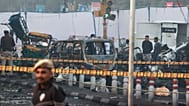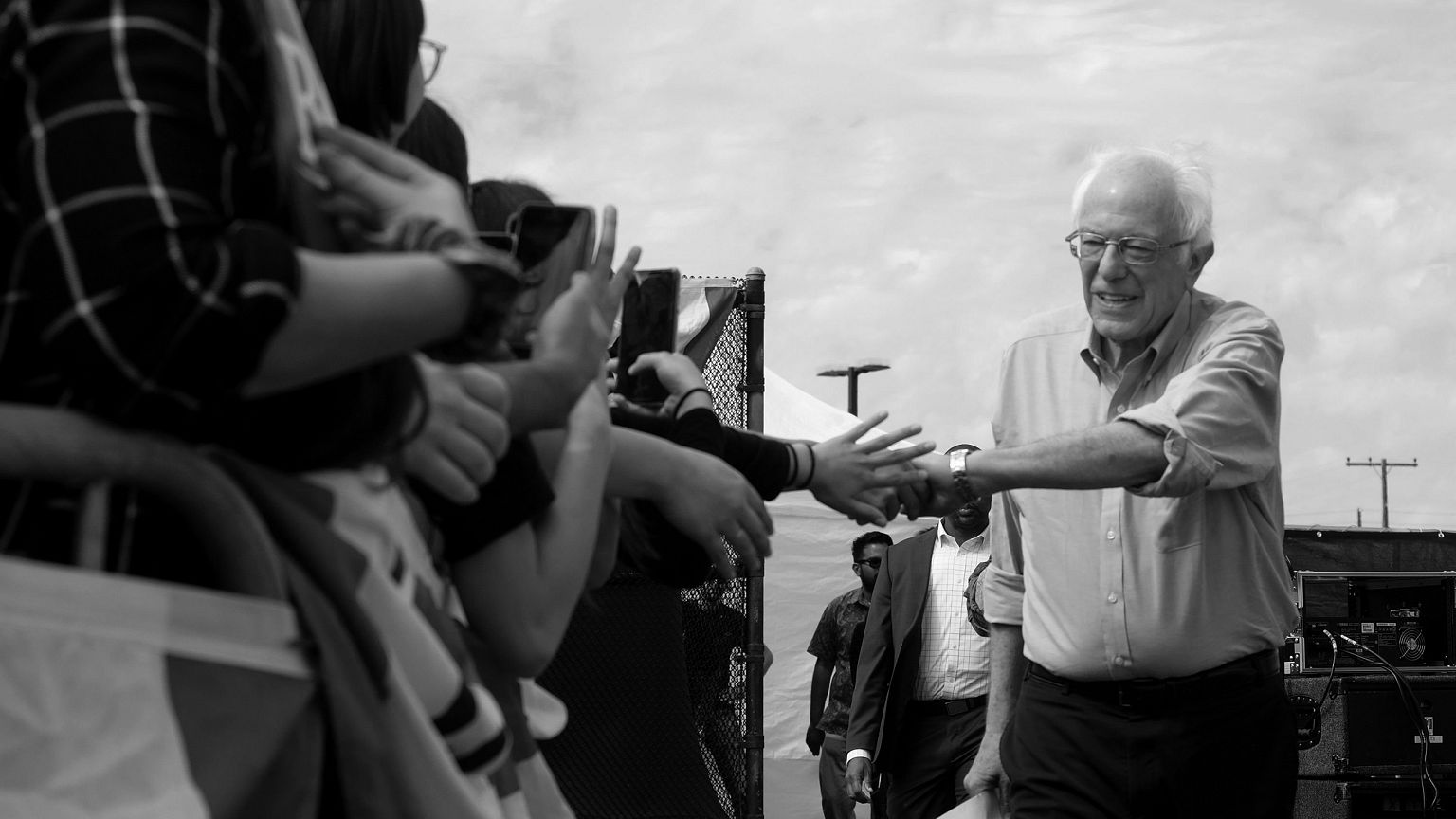Analysis: The national front-runner left Nevada for California because he has the luxury of trying to build a lead while rivals battle to be the one to take him on.
LAS VEGAS — Bernie Sanders spent most of the last day before Nevada's hotly contested caucus on Saturday rallying voters who can't cast ballots here.
With the motherlode of delegates to the national convention up for grabs in the March 3 Super Tuesday contests in 14 states, the Democratic front-runner's campaign decided its most valuable resource — Sanders' time — was best used in California on Friday. He campaigned at a high school in Santa Ana that is situated in a low-turnout Hispanic-majority congressional district in the morning and at an amphitheater in Bakersfield — the hometown of House GOP leader Kevin McCarthy — in the afternoon.
It's not that the front-runner for the Democratic presidential nomination has given up on Nevada — he's favored to win here and he returned to Las Vegas for a final outdoor rally on Friday night. It's just that mining votes in California is both a luxury he can afford and a more crucial aspect of his strategy than adding support in Nevada.
That's because the results in Nevada are all but certain to be a footnote in the story of whether Sanders wins the Democratic nomination, while the smallest of margins in California, Texas and other Super Tuesday states could be pivotal in his quest to walk into the party's convention this summer with either a majority or a large plurality of delegates.
The effect is that Sanders is working toward taking a commanding lead in the race while his establishment detractors fret in place.
"Smart decision for him to be working to turn out the base in a heavily Latino district in California," said Adrienne Elrod, a Democratic strategist who served as chief of staff to a former congresswoman from the area Sanders visited Friday. "Bear in mind that Bernie could walk away from a state like California with a disproportionately high number of delegates because the [other] candidates who are on the ballot are not just splitting the vote but marginalizing each other and keeping [each other] from hitting 15 percent."
Sanders is the only candidate who can be confident that he will meet the 15 percent threshold to qualify for the pool of 144 delegates decided by the statewide vote in California — and if no other candidate meets that benchmark, he'll get all of them. He's also in good position to win delegates in most if not all of the state's congressional districts — a set of 271 delegates in 53 districts — and he is poised to collect at least his share of delegates in most of the other Super Tuesday venues.
Texas, which allots most of its delegates by state Senate district rather than congressional district, carries the most weight after California. There are 228 delegates available on Super Tuesday in the Lone Star state — 79 statewide and 149 apportioned among the Senate districts.
Democratic Party establishment insiders increasingly fear that they will be boxed into living out one of a pair of nightmare scenarios: Sanders winning the nomination outright — or an ugly convention floor fight that leaves a splintered party divided more bitterly than it is now. But with Super Tuesday just around the corner, and no sign that any of the remaining candidates have galvanized an anti-Sanders vote within the party, they may be trying to wake up too late.
They are also working under the assumption that if there was just one alternative to Sanders, he would lose. But there's no real evidence to support that position, and no reason to think there will be one alternative anytime soon.
"There is no incentive for anyone to drop out," said Chris Kofinis, a Democratic strategist who has worked on past presidential campaigns. "It's like a game of chicken. Drop out and you're just giving up your delegates. Why would you do that?"
To win the nomination, Sanders or any other candidate has to amass a majority of the 3,979 pledged delegates to the convention on the first ballot, or a majority of a set that includes those delegates and the 700-plus "super delegate" party leaders who are eligible to vote only if the pick isn't made on the first ballot.
With such a wide and divided field, it will be hard for any candidate to win on the first ballot. But Sanders and his supporters argue that a candidate with a plurality should become the nominee. Five of his rivals indicated in the NBC/MSNBC debate earlier this week that they don't agree the delegate leader at the end of the campaign should automatically become the nominee if he or she doesn't have a majority.
There are wrinkles to the delegate rules in a couple of states, like Texas with its state Senate district delegates, but they are fairly consistent and easy to follow. Delegates are allocated to candidates based on the voting results in each state and congressional district across the country.
There's a pool of delegates awarded at the statewide level, and there is a separate pool of delegates divided among each of the congressional districts in each state. Every candidate who hits or exceeds the 15 percent mark statewide gets delegates, with the allocation based on the percentage of the vote each receives. The same is true in congressional districts.
When candidates receive votes but don't meet the threshold, their shares of the vote are re-allocated to the candidates who did meet the threshold for the purposes of allocating the delegates among all the candidates who qualified. California has 415 delegates in play March 3 — the most of any state on the calendar — and Super Tuesday accounts for a total of 1,344 or about one-third of the entire set of nearly 3,979 "pledged" delegates to the convention.
Sanders will win fewer delegates if more candidates meet the threshold in states and districts where he comes in first. But if different rivals qualify in different states and districts — which is all but certain — they will siphon strength from each other even as they keep him further from attaining a majority of delegates overall. That is, the more even the spread of delegates among the other candidates, the more incentive there is for each of them to keep running.
Now deep into his second presidential campaign, and having been well-represented on a party commission that re-wrote the delegate rules for this year's election, Sanders' team is very familiar with the ins and outs of maximizing its force to turn votes into delegates. California is one potential key to the delegate math.
Buffy Wicks, a California assemblywoman who ran election operations in the state for Barack Obama and Hillary Clinton in past presidential contests said many Democrats in her state have been watching the twists and turns of the race before making a decision. While Sanders' base of highly committed voters has demonstrated his strength early in polling, Wicks said, voters who have been less quick to pick will sort themselves in the coming days and help some candidates across the threshold for statewide delegates.
"I think what you have is uncertainty with the rest of the electorate," Wicks said. "There will be candidates that pop through the threshold. The question is who."
That remains the broader question for Democrats who want to stop Sanders at all costs. Meanwhile, he keeps trucking.















